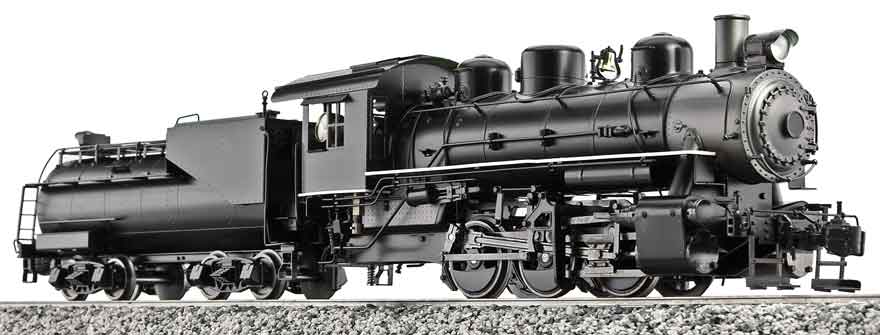 G732-01
0-6-0 Vanderbilt Tender
Unlettered Black
Butane Fired, Live Steam
 G732-02
0-6-0 Vanderbilt Tender
SP #1221 Butane Fired, Live Steam
 G732-03
0-6-0 Vanderbilt Tender
UP #4436 Butane Fired, Live Steam
 G732-04
0-6-0 Vanderbilt Tender
ERIE #119
Butane Fired, Live Steam
 G732-05
0-6-0 Vanderbilt Tender
GN #58 Butane Fired, Live Steam
 G732-06
0-6-0 Vanderbilt Tender
CN #7428 Butane Fired, Live Steam
|
The United States Railroad Administration was set up in response to a need for efficient railroad operations following America’s entry into World War 1 in 1917. The existing network was struggling to cope with the additional traffic generated and many railroads were already in receivership before the outbreak of war. To deal with this and to ensure efficient operations, the entire system was nationalized for the duration and the USRA set about cutting duplicated services and streamlining operations, in the process ordering the construction of over 100,000 railroad cars and more than 1,900 steam locomotives, all of new, standard USRA designs. However, before many of these locos could be produced the war ended, although deliveries continued into 1919. The USRA was finally wound up by Congress in 1920.
The legacy of this scheme was twelve types of loco, from the humble 0-6-0 switcher to massive articulated 2-8-8-2’s, all of which were later absorbed into existing railroad companies and many of which were perpetuated by the works that built them. The specification for these classes included many modern fittings such as pneumatic firedoors, dual gauge glasses, power reversers and, on the larger designs, mechanical stokers. Our standard USRA 0-6-0 switcher was built by Baldwin and ALCO and the batch eventually numbered 255 examples with additional copies being produced after the war. Sitting on 4’ 3” drivers and with a tractive effort of 39,100 lbf these little engines could punch well above their weight and were to be found right across North America, from Texas to Canada, California to New York. This model is equipped with a Vanderbilt tender, the cylindrical design of which saved weight and made for a stronger unit.









